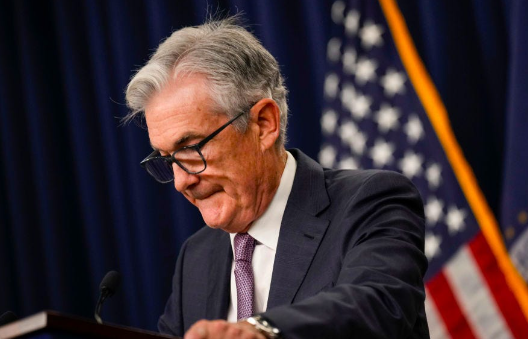
Monetary Policy & Inflation | Rates | US

Monetary Policy & Inflation | Rates | US
This article is only available to Macro Hive subscribers. Sign-up to receive world-class macro analysis with a daily curated newsletter, podcast, original content from award-winning researchers, cross market strategy, equity insights, trade ideas, crypto flow frameworks, academic paper summaries, explanation and analysis of market-moving events, community investor chat room, and more.
Markets are pricing a 50bp hike of the federal funds rate (FFR) to 4.25-4.50% at the 14 December FOMC meeting. I agree, based on Fed communications and absence of a Nick Timiraos article warning us of a change of plans.
This meeting will produce a Summary of Economic Projections (SEP), so we will get a new terminal FFR. Public FOMC members’ chatter suggests the doves were content with 5.00-5.25% as the new range, up 50bp from the September SEP. This is based on a comment made by San Francisco President Mary Daly before the November nonfarm payrolls (NFP).
Following the NFP release and the November Atlanta Fed median wage release at 6.4%, the same as October, (and a further increase from 7.3% to 7.7% for job switchers) the doves will probably raise their estimate of the terminal FFR another 25bp.
The hawks, however, are unlikely to have been surprised by either the NFP or Atlanta Fed wage data. Jim Bullard saw 5-7% as ‘the Zone’ for the terminal FFR. Accounting for voter influence, the FOMC skews dovish (Appendix: Table of Doves/Hawks). Therefore, the median terminal FFR could be about 5.25-5.50%.
I have stronger conviction on my inflation view than on the Fed commitment to 2% inflation. My simplistic Taylor rule, based on median price PCE and the CBO estimate of U*, remains around 8%, which suggests the economy is tracking roughly as I expect (Chart 1).
Chart 1: The Taylor Rule FFR Has Not Dropped From c.8%

Next week, Chair Jerome Powell is likely to again proclaim his strong inflation-fighting conviction. To be fair, in response to rising inflation, the Fed has brought its projection of the 2023 FFR closer to the Taylor rule FFR implied by the SEP (Chart 2). It is (in my view) unrealistic SEP projections of inflation and unemployment that have kept the Fed terminal FFR below my 8% expectations.
Chart 2: Fed’s Terminal and Taylor rule FFR Estimates Converge

Next week, I expect Powell’s inflation proclamations to remain as strong as ever. However, as Bilal has highlighted, markets have started to price a Fed inflation target at 3% and some academics are pushing in this direction. For now, I cannot imagine the Fed announcing a 3% inflation target when actual core PCE is 5%.
The reality, however, is that the proof of the pudding will be in the eating. All we will be able to observe is inflation prints and the Fed’s reaction to them. We will only find out ex-post if the Fed reaction has been adequate. And even then, should the Fed fail to lower inflation, it will be able to invoke forecasting errors rather than dovish intentions.
Still, next week’s SEP will give us a sense of how serious the Fed actually is. The Fed will have to mark to market its end-2022 core PCE forecast, currently 4.5%, against 5% YoY in November. I do not expect them to raise their 2023-25 core PCE trajectory as it would be too obvious a sign that they are not serious about their inflation target.
At the same time, as discussed above, I expect them to raise the terminal FFR, i.e., the 2023 dot 75bp to 5.25-5.50%. The 2024 dot could reveal how tough they really intend to be. A 2024 dot increase in line with that of the 2023 dot would signal that the Fed intends to walk the talk.
I will also pay close attention to how Powell reacts to the easing of financial conditions. So far, the Fed has failed to move to 50bp hikes without easing financial conditions. Based on the GS index, financial conditions are now easier than before the September FOMC meeting, i.e., when the FFR was 150bp lower than currently.
Powell may not be so aggressive, possibly out of concerns over a disruption of the housing market. If so, it would also increase my doubts on the Fed inflation fighting intentions.
Chart 3: Slower Hikes Have Eased Financial Conditions

The market is under-pricing the FFR trajectory. In addition to under-pricing the terminal FFR at a tad below 5% in May 2023, markets have completely unrealistic expectations of Fed rate cuts. The last time core PCE was at 5% was in 1983. It took more than 10 years for inflation to fall to 2% and for the FFR to fall from 9% to 5.75% (Chart 4). It may not take 10 years this time, but it sure will not take six months either.
Chart 4: Past Fed Cycle Suggest Immediate Rate Cuts Highly Unlikely


Dominique Dwor-Frecaut is a macro strategist based in Southern California. She has worked on EM and DMs at hedge funds, on the sell side, the NY Fed, the IMF, and the World Bank. She joined Macro Hive soon after its inception.
(The commentary contained in the above article does not constitute an offer or a solicitation, or a recommendation to implement or liquidate an investment or to carry out any other transaction. It should not be used as a basis for any investment decision or other decision. Any investment decision should be based on appropriate professional advice specific to your needs.)
Spring sale - Prime Membership only £3 for 3 months! Get trade ideas and macro insights now
Your subscription has been successfully canceled.
Discount Applied - Your subscription has now updated with Coupon and from next payment Discount will be applied.